Burgundy
6 natural region
 Autunois-Morvan : The property of Boisseau is situated in the Morvan regional park, whose forest-capped peaks surround the antique city of Autun, makes for a setting of intense natural beauty.
Autunois-Morvan : The property of Boisseau is situated in the Morvan regional park, whose forest-capped peaks surround the antique city of Autun, makes for a setting of intense natural beauty.
The lush valleys giving way to pastureland on one side, to rugged slopes on another and to vineyards on yet another characterise the diversity of this region.
The Morvan landscapes are able to embody the spirit of freedom and independence demonstrated by France's Gaule ancestors, who founded this site and consolidated their power base in Bibracte (Mont Beuvray), while inspiring pride in the area's longstanding traditions.
www.autun-tourisme.com
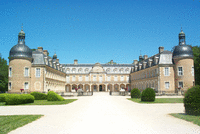 Bresse-Bourguignonne : From the Jura foothills to the Saône River Valley, this region acts as the transition between Burgundy, Switzerland and France's eastern mountain ranges.
Bresse-Bourguignonne : From the Jura foothills to the Saône River Valley, this region acts as the transition between Burgundy, Switzerland and France's eastern mountain ranges.
A land with many facets: its ponds and water courses make for a fisherman's and boater's paradise; a regional architectural style featuring brick, wood and tile roofs; a thriving arts and crafts sector; and outstanding local dishes and gastronomy.
 Chalonnais :
The Chalonnais region would best be characterised by the presence of a dynamic urban centre amidst a harmonious variety of landscapes and country settings.
Chalonnais :
The Chalonnais region would best be characterised by the presence of a dynamic urban centre amidst a harmonious variety of landscapes and country settings.
From vineyard-clad hillsides, producing wines of international renown, to the surrounding forests, plains and Saône River basin, this region reveals its true treasures by the sheer array of potential destinations.
Yet the heart of the region remains strongly anchored in the city of Chalon-sur-Saône, with its museums, historical architecture and extremely animated street life (festivals, parades, fairs and markets).
 Charolais-Brionnais : This rolling stretch of lush pastureland, which has been giving the world one of its great breeds of beef cattle - the Charolais, is located in the department's south-western area.
Charolais-Brionnais : This rolling stretch of lush pastureland, which has been giving the world one of its great breeds of beef cattle - the Charolais, is located in the department's south-western area.
Besides a scenic landscape that features a variety of gently-meandering rivers and a crisscross of hedgerows, this region offers a myriad of villages, fortified farms and castles.
Romanesque architecture and a plenitude of arts and crafts activities also highlight visits to the Charolais-Brionnais.
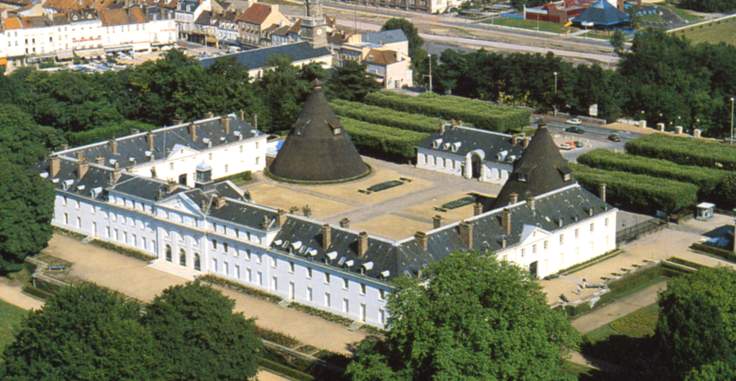 Creusot Montceau : One of Burgundy's industrial hubs, the cities of Le Creusot and Montceau have been shaped since the end of the 18th-century both by the presence of raw materials (coal) and by the area's accessibility to water transport.
Creusot Montceau : One of Burgundy's industrial hubs, the cities of Le Creusot and Montceau have been shaped since the end of the 18th-century both by the presence of raw materials (coal) and by the area's accessibility to water transport.
Physical traces of the Industrial Revolution abound (the stately residences of the period's entrepreneurs, worker housing, factories and public monuments), which has not detracted high-technology businesses from locating here.
Moreover, a number of initiatives have been undertaken recently to incorporate this rich industrial heritage into the array of tourist activities offered throughout the region.
 Maconnais clunisois : Surrounded by the Saône River plain, the Beaujolais mountains and rolling Charolais country, the Mâconnais-Clunisois exudes a Mediterranean flavour thanks to the pink and ochre tones of its landscape and an architecture typified by rounded tiles.
Maconnais clunisois : Surrounded by the Saône River plain, the Beaujolais mountains and rolling Charolais country, the Mâconnais-Clunisois exudes a Mediterranean flavour thanks to the pink and ochre tones of its landscape and an architecture typified by rounded tiles.
Area highlights include: the caves at Azé and Blanot, with bear remains dating back some 300,000 years; the prehistoric site in and around Solutré; the wine villages and their distinctive winegrowers'homes; and a number of fine monuments from over the ages.
The towns of Cluny and Tournus provide ample testimony of their spiritual and architectural glory.
The area is also celebrated for the quality of its wines, showcased year in and year out at the Mâcon Wine Fair.
For more information :
www.southernburgundy.com
www.burgundyeye.com

History of Burgundy
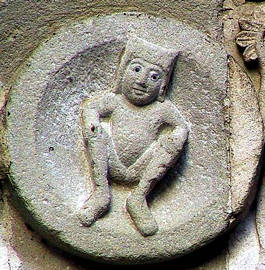 Burgundy has always been a crossroads of roads and civilisations.
Since the first merchants, 3000 years ago during the Bronze age, brought tin from Cornwall to the Mediterranean regions by the valleys of rivers Seine and Saône, but also through the Danube valley which they reached through Alsace and southern Germany. Doing so, they transported the basis of a civilisation : without tin, there is no bronze !
Burgundy has always been a crossroads of roads and civilisations.
Since the first merchants, 3000 years ago during the Bronze age, brought tin from Cornwall to the Mediterranean regions by the valleys of rivers Seine and Saône, but also through the Danube valley which they reached through Alsace and southern Germany. Doing so, they transported the basis of a civilisation : without tin, there is no bronze !
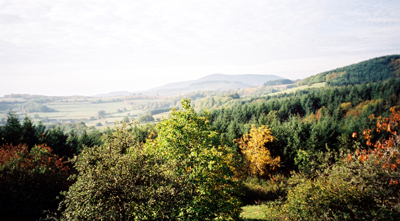 About one thousand years later the control of this major axis of communication permitted the Celtic people of the Eduans to assert their power upon most parts of what is at present Burgundy, around their capital, the oppidum Bibracte on top of Mont Beuvray in the Morvan mountains. This was the place where Vercingetorix was elected chief of the united Gallic peoples against the Roman army under Julius Cesar, only a few months before the battle of Alesia in Northern Burgundy put an end the the independance of Gaule in 52 B.C.
About one thousand years later the control of this major axis of communication permitted the Celtic people of the Eduans to assert their power upon most parts of what is at present Burgundy, around their capital, the oppidum Bibracte on top of Mont Beuvray in the Morvan mountains. This was the place where Vercingetorix was elected chief of the united Gallic peoples against the Roman army under Julius Cesar, only a few months before the battle of Alesia in Northern Burgundy put an end the the independance of Gaule in 52 B.C.
From the 10th century onward the name " Burgundy " meant a duchy belonging to the royal family of the Capetians.
At that time the most influential centres of monastic reform throughout Christian Europe, Cluny and Cîteaux, were located in Burgundy.
The spritual renaissance came to Saone-et-Loire when the monk Bernon settled at Cluny. Guillaume, Duke of Aquitaine ceded him the land.Instructing him to build a monastery. Thus was born one of the masterpieces of Romanesque architecture.
Cluny abbey, founded in 910 not far from Mâcon, owed its success to the exemption from all other authority than that of the pope's, but also to the exceptional personality and long life of its first abbots.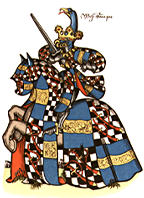 At the end of the 11th century, Hugh of Semurdecided to build the largest church un the world. Impressive vestiges of this awe-inspiring past are visible today.
At the end of the 11th century, Hugh of Semurdecided to build the largest church un the world. Impressive vestiges of this awe-inspiring past are visible today.
Vézelay in northern Burgundy became a major meeting point for leaders of the most important movements of the time, especially the crusades.
In 1190 the third crusade took its leave from Vézelay led by king Philip August of France and Richard the Lionhearted of England. The famous cathedral of Saint Lazare in Autun is a perfect illustration of the majesty og early Romanesque architecture. The church is decorated with world-renowned sculptures.
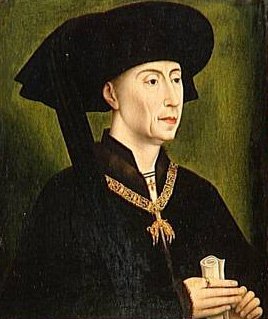 The Duchy of Burgundy, where the Valois family had succeeded the Capetians in the 14th century just as on the throne of France some decades before, became the most powerful state in Europe thanks to the skillful policy of its dukes and to the vanishing royal power in the One Hundred Years War.
The Duchy of Burgundy, where the Valois family had succeeded the Capetians in the 14th century just as on the throne of France some decades before, became the most powerful state in Europe thanks to the skillful policy of its dukes and to the vanishing royal power in the One Hundred Years War.
The Burgundian conglomerate of states for the last time created a major political entity between France and the German empire.
Beyond political and military actions, its influence was particularly strong in artistic and courtly life.
The modern period, after the end of the independant duchy, brought a withdrawal of Burgundy into the kingdom of France, largely cut from the main currents of international exchange.
In the middle of 19th century, Burgundy furnished Paris with fire wood (80 % of the capital's needs were covered with wood from Burgundy), which produced a profound change in the hydrography of the Morvan mountains, affecting the whole system from tiny streams to the newly created Canal du Nivernais and Lac des Settons, an artificial lake. Burguny furnished Paris also with stone from many quarries and with wine and other local produce, gave Paris its modern symbol: Gustave Eiffel, who built the famous tower, was originary from Dijon, descendant of a family immigrated from Germany, bearing the unpronounceable name of "Boenichhausen". When his parents decided to change their name, they simply took the name of the region where they had come from - the Eifel.
For more information :
www.burgundy.net
Tableau la Vierge du Chancelier Rolin - Musée du Louvre
Presentation of Morvan
 Top
Top
Back

